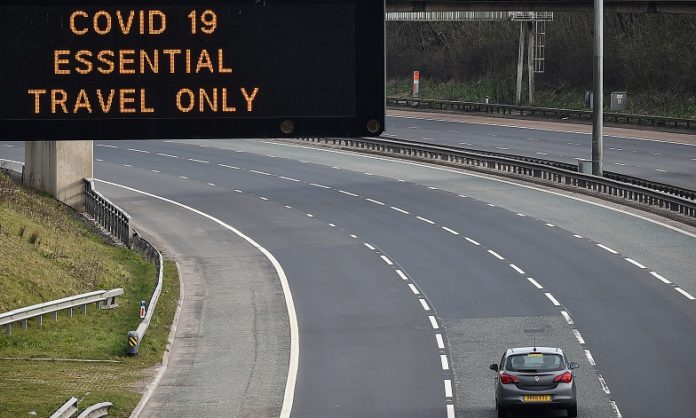I had no choice but to speak out against lockdowns. As a public-health scientist with decades of experience working on infectious-disease outbreaks, I couldn’t stay silent. Not when basic principles of public health are thrown out of the window. Not when the working class is thrown under the bus. Not when lockdown opponents were thrown to the wolves. There was never a scientific consensus for lockdowns. That balloon had to be popped.
Two key Covid facts were quickly obvious to me. First, with the early outbreaks in Italy and Iran, this was a severe pandemic that would eventually spread to the rest of the world, resulting in many deaths. That made me nervous. Second, based on the data from Wuhan, in China, there was a dramatic difference in mortality by age, with over a thousand-fold difference between the young and the old. That was a huge relief. I am a single father with a teenager and five-year-old twins. Like most parents, I care more about my children than myself. Unlike the 1918 Spanish Flu pandemic, children had much less to fear from Covid than from annual influenza or traffic accidents. They could get on with life unharmed — or so I thought.
For society at large, the conclusion was obvious. We had to protect older, high-risk people while younger low-risk adults kept society moving.
I had no choice but to speak out against lockdowns. As a public-health scientist with decades of experience working on infectious-disease outbreaks, I couldn’t stay silent. Not when basic principles of public health are thrown out of the window. Not when the working class is thrown under the bus. Not when lockdown opponents were thrown to the wolves. There was never a scientific consensus for lockdowns. That balloon had to be popped.
Two key Covid facts were quickly obvious to me. First, with the early outbreaks in Italy and Iran, this was a severe pandemic that would eventually spread to the rest of the world, resulting in many deaths. That made me nervous. Second, based on the data from Wuhan, in China, there was a dramatic difference in mortality by age, with over a thousand-fold difference between the young and the old. That was a huge relief. I am a single father with a teenager and five-year-old twins. Like most parents, I care more about my children than myself. Unlike the 1918 Spanish Flu pandemic, children had much less to fear from Covid than from annual influenza or traffic accidents. They could get on with life unharmed — or so I thought.
For society at large, the conclusion was obvious. We had to protect older, high-risk people while younger low-risk adults kept society moving.
But that didn’t happen. Instead, schools closed while nursing homes went unprotected. Why? It made no sense. So, I picked up a pen. To my surprise, I could not interest any US media in my thoughts, despite my knowledge and experience with infectious-disease outbreaks. I had more success in my native Sweden, with op-eds in the major daily newspapers, and, eventually, a piece in spiked. Other like-minded scientists faced similar hurdles.
Instead of understanding the pandemic, we were encouraged to fear it. Instead of life, we got lockdowns and death. We got delayed cancer diagnoses, worse cardiovascular-disease outcomes, deteriorating mental health, and a lot more collateral public-health damage from lockdown. Children, the elderly and the working class were the hardest hit by what can only be described as the biggest public-health fiasco in history.
Throughout the 2020 spring wave, Sweden kept daycare and schools open for every one of its 1.8million children aged between one and 15. And it did so without subjecting them to testing, masks, physical barriers or social distancing. This policy led to precisely zero Covid deaths in that age group, while teachers had a Covid risk similar to the average of other professions. The Swedish Public Health Agency reported these facts in mid-June, but in the US lockdown proponents still pushed for school closures.
In July, the New England Journal of Medicine published an article on ‘reopening primary schools during the pandemic’. Shockingly, it did not even mention the evidence from the only major Western country that kept schools open throughout the pandemic. That is like evaluating a new drug while ignoring data from the placebo control group.
With difficulty publishing, I decided to use my mostly dormant Twitter account to get the word out. I searched for tweets about schools and replied with a link to the Swedish study. A few of these replies were retweeted, which gave the Swedish data some attention. It also led to an invitation to write for the Spectator. In August, I finally broke into the US media with a CNN op-ed against school closures. I know Spanish, so I wrote a piece for CNN-Español. CNN-English was not interested.
Something was clearly amiss with the media. Among infectious-disease epidemiology colleagues that I know, most favour focused protection of high-risk groups instead of lockdowns, but the media made it sound like there was a scientific consensus for general lockdowns.
Fair Use Excerpt. Read the rest here.


